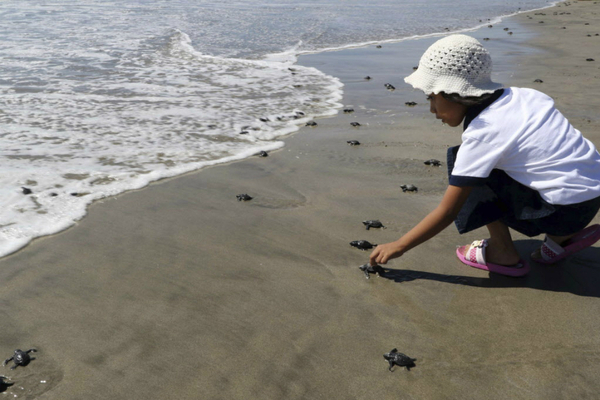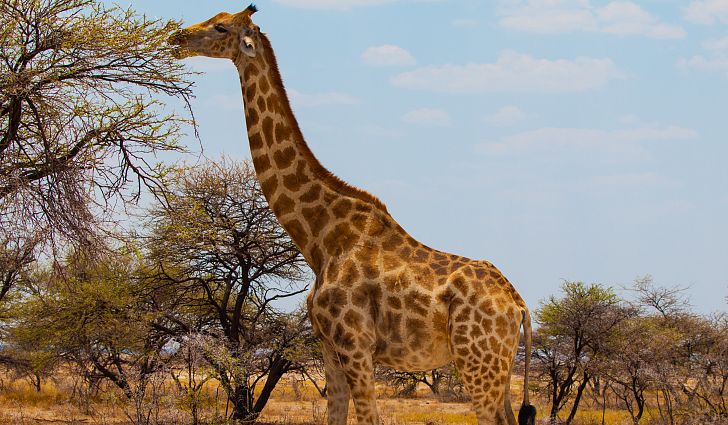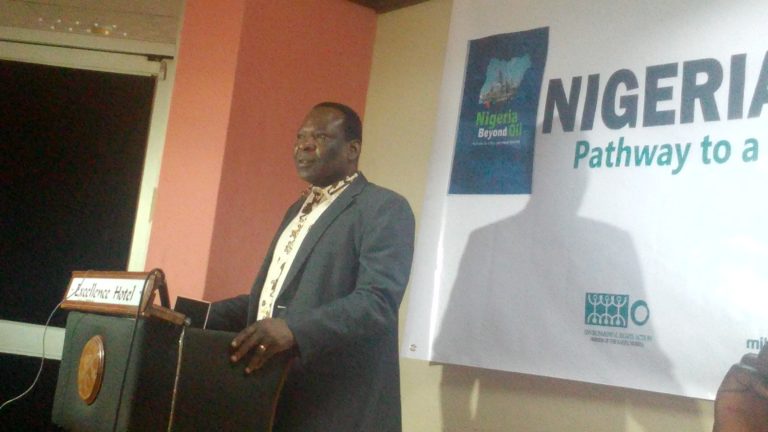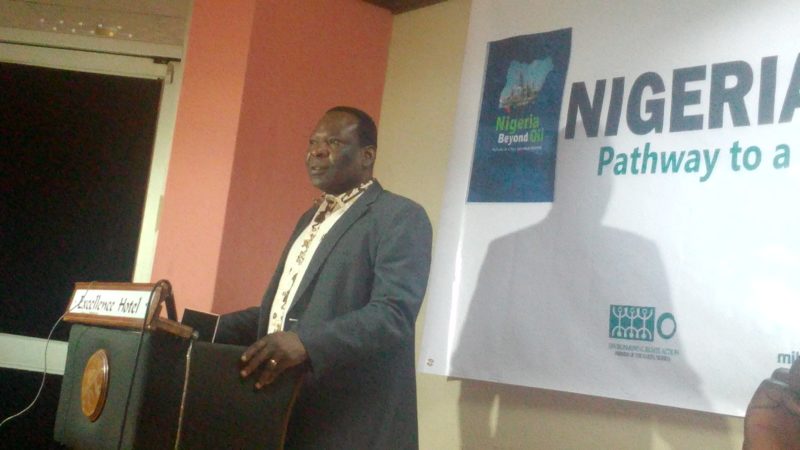U.S. President-elect Donald Trump on Thursday, December 8, 2016 nominated Scott Pruitt, the attorney general of the oil and gas-intensive state of Oklahoma, to head the Environmental Protection Agency (EPA), a move signaling an assault on President Obama’s climate change and environmental legacy.
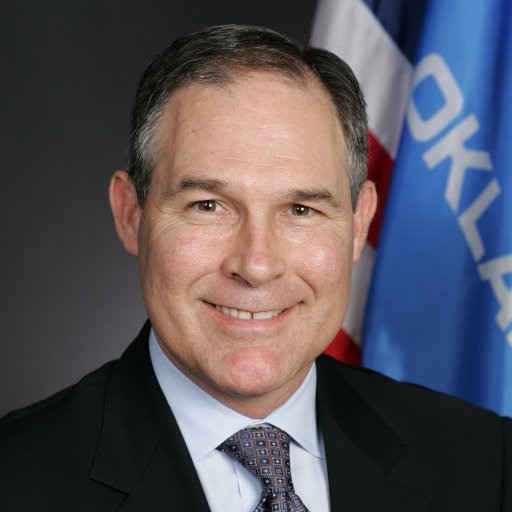
Pruitt has spent much of his energy as attorney general fighting the very agency he is being nominated to lead.
He is the third of Trump’s nominees who have key philosophical differences with the missions of the agencies they have been tapped to run. Ben Carson, named to head the Department of Housing and Urban Development, has expressed a deep aversion to the social safety net programmes and fair housing initiatives that have been central to that agency’s activities. Betsy DeVos, named education secretary, has a passion for private school vouchers that critics say undercut the public school systems at the core of the government’s mission.
Trump’s transition team announced the nomination in a news release on Thursday, calling Pruitt “an expert in Constitutional law” and saying he “brings a deep understanding of the impact of regulations on both the environment and the economy.”
“For too long, the Environmental Protection Agency has spent taxpayer dollars on an out-of-control anti-energy agenda that has destroyed millions of jobs, while also undermining our incredible farmers and many other businesses and industries at every turn,” the release quoted Trump as saying. He said Pruitt “will reverse this trend and restore the EPA’s essential mission of keeping our air and our water clean and safe.” Trump added, “My administration “strongly believes in environmental protection, and Scott Pruitt will be a powerful advocate for that mission while promoting jobs, safety and opportunity.”
Pruitt was quoted as saying: “The American people are tired of seeing billions of dollars drained from our economy due to unnecessary EPA regulations, and I intend to run this agency in a way that fosters both responsible protection of the environment and freedom for American businesses.”
Pruitt, who has written that the debate on climate change is “far from settled,” joined a coalition of state attorneys general in suing over the agency’s Clean Power Plan, the principal Obama-era policy aimed at reducing U.S. greenhouse gas emissions from the electricity sector. He has also sued, with fellow state attorneys general, over the EPA’s recently announced regulations seeking to curtail the emissions of methane, a powerful greenhouse gas, from the oil and gas sector.
On his Linked In page, Pruitt boasts of being “a leading advocate against the EPA’s activist agenda.”
After he was elected attorney general in 2010, Pruitt established a “Federalism Unit” to “more effectively combat unwarranted regulation and systematic overreach by federal agencies, boards and offices,” according to his online biography.
And he has gone on to challenge the administration not just over the environment but over a host of other areas. He joined other Republican attorneys general in a lawsuit over Obama’s immigration policies. He has also sued the administration over the Affordable Care Act, saying the health-care mandate on religious employers to provide coverage including contraception was unconstitutional. He has sued over the Dodd-Frank financial reform.
An ally of the energy industry, Pruitt, along with Alabama Attorney General Luther Strange, came to the defense of ExxonMobil when it fell under investigation by attorneys general from more liberal states seeking information about whether the oil giant failed to disclose material information about climate change.
“We do not doubt the sincerity of the beliefs of our fellow attorneys general about climate change and the role human activity plays in it,” they wrote at the conservative publication National Review. “But we call upon them to press those beliefs through debate, not through governmental intimidation of those who disagree with them.”
In an interview with The Post in September, as a D.C. federal appeals court was preparing to hear arguments over the Clean Power Plan, Pruitt detailed why he has remained a leading opponent of the EPA’s efforts to curb carbon emissions by regulating power plants.
“What concerns the states is the process, the procedures, the authority that the EPA is exerting that we think is entirely inconsistent with its constitutional and statutory authority,” he said at the time.
Agencies such as the EPA, he said, should not be trying to “pinch hit” for Congress.
“This is a unique approach by EPA, whether they want to acknowledge it or not,” he said of the provisions of the Clean Air Act that the agency had relied upon to write new regulations. “The overreach is the statutes do not permit (EPA officials) to act in the way they are. They tend to have this approach that the end justifies the means… They tend to justify it by saying this big issue, this is an important issue.”
But he added that’s where Congress should have authority, not EPA. “This is something from a constitutional and statutory perspective that causes great concern.”
Environmental groups reacted with alarm Wednesday at the nomination. And New York State Attorney General Eric Schneiderman vowed to “use the full power” of his office to wage a legal battle to “compel” enforcement of environmental laws under Trump.
“Scott Pruitt has a record of attacking the environmental protections that EPA is charged with enforcing. He has built his political career by trying to undermine EPA’s mission of environmental protection,” said Fred Krupp, president of the Environmental Defense Fund. “Our country needs – and deserves – an EPA administrator who is guided by science, who respects America’s environmental laws, and who values protecting the health and safety of all Americans ahead of the lobbying agenda of special interests.”
Rhea Suh, president of the Natural Resources Defense Council, said that “over the past five years, Pruitt has used his position as Oklahoma’s top prosecutor to sue the EPA in a series of attempts to deny Americans the benefits of reducing mercury, arsenic, and other toxins from the air we breathe; cutting smog that can cause asthma attacks; and protecting our wetlands and streams.”
Pruitt has also fought to limit the scope of the federal government in regulating pollution of rivers under the Waters of the United States rule.
Sen. Edward J. Markey (D-Mass.), who has been active on environmental issues, said, “Scott Pruitt would have EPA stand for Every Polluter’s Ally.”
In 2014, the New York Times reported that a letter ostensibly written by Pruitt alleging that the agency overestimated air pollution from natural gas drilling was actually written by lawyers for Devon Energy, one of the state’s largest oil and gas companies.
Industry representatives expressed satisfaction with the choice on Wednesday. “The office he headed was present and accounted for in the battle to keep EPA faithful to its statutory authority and respectful of the role of the states in our system of cooperative federalism,” said Scott Segal, head of the policy group at the lobbying and legal firm Bracewell. “Given that we are almost two decades overdue for an overhaul of the Clean Air Act, there is interest on both sides of the aisle to look at that statute.”
David Rivkin, a constitutional litigator who represented Pruitt and Oklahoma in challenging the Clean Power Plan, said he believed Pruitt would be able to make sure the EPA lives up to its mission of protecting air and water while avoiding federal overreach.
“General Pruitt has been the leader among the AGs in defending federalism, the key feature of our constitutional architecture,” said Rivkin, a partner at Baker Hostetler, adding that he believed Pruitt would “ensure both environmental protection and constitutional fidelity.”
Pruitt’s outlook reflects his home state: Oklahoma ranked fifth in the nation in onshore crude oil output in 2014, has five oil refineries, and is home to the giant Cushing oil storage and trading hub, where the price for the benchmark West Texas Intermediate grade is set every day. Although oil and natural gas production sagged in the 1990s and early 2000s, the surge in horizontal fracturing, or fracking, has boosted output.
The state’s natural gas output accounts for 10 percent of the nation’s overall total. For the week ended Oct. 28, there were 73 drilling rigs in operation in Oklahoma.
Pruitt has served as head of the Republican Attorneys General Association, a group that has relied heavily on funds from ultraconservative groups and the oil industry. The biggest contributors this year included the Judicial Crisis Network, the U.S. Chamber of Commerce’s Institute of Legal Reform, Sheldon Adelson, oil conglomerate Koch Industries and Murray Energy, a leading coal mining company.
Pruitt, a Kentucky native who moved to Oklahoma to attend the University of Tulsa law school, has also been active in religious groups. He serves as deacon of the First Baptist Church of Broken Arrow. In 2012, Pruitt was named a trustee of the Southern Baptist Theological Seminary. Before serving as attorney general, he was a member of the state legislature.
Dallas investor Doug Deason, a friend of Pruitt, said he expects the Oklahoma attorney general to immediately get to work rolling back the EPA’s “silly overreach” and to let states handle environmental oversight.
“Just like most Republican attorney generals, especially in energy-producing states, he has been really frustrated with the government and the EPA’s overreach into everything,” Deason said.
But Deason said liberals will be happily surprised by Pruitt’s “open-minded” attitude, adding that he is “willing to look at things.”
“He will bring a more balanced, logical look” at environmental regulation,” he said.
Pruitt’s selection was strongly supported by Oklahoma oil billionaire Harold Hamm.
The nomination suggests an extraordinarily tough road ahead for the Clean Power Plan, president Obama’s signature climate policy. However, the precise fate of the regulation most immediately turns on the U.S. Court of Appeals for the D.C. Circuit, which has not yet ruled in the lawsuit brought by Pruitt and his fellow attorneys general against the agency Pruitt is now named to lead.
“Some have suggested that Pruitt’s hands might be tied because he participated in litigation against the agency,” Segal said in an email. “This is a silly position. There is no conflict in representing your state on litigation dealing with rules of general applicability and then serving your nation as a federal official.”
Dismantling the regulation if it survives the courts would not be simple, because the agency has already finalised it – meaning that to undo and replace it would require a public notice and comment process. Environmental groups would likely sue the agency over such a move.
However, some of the Clean Power Plan’s objectives appear to have been already realized long before it came into effect. The United States is already burning less coal and more natural gas, meaning fewer carbon dioxide emissions.
In 2030, the EPA projected in its final Clean Power Plan rule, coal would be reduced to providing 27 percent of U.S. electricity, with natural gas at 33 percent. Yet this very year, according to the U.S. Energy Information Administration, natural gas will provide 34 percent of U.S. electricity, and coal 30 percent.
By Chris Mooney, Brady Dennis, Steven Mufson, Matea Gold and William Branigin (The Washington Post)

